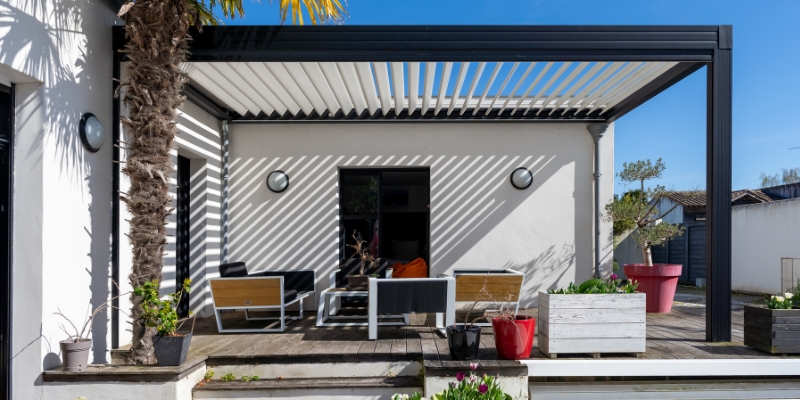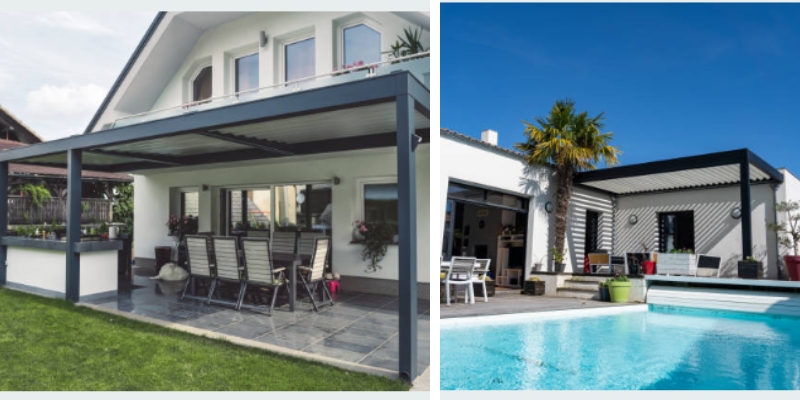
Pergolas are one of the most in-demand outdoor structures used for enhancing the beauty and functionality of the outdoor space.
But if you live in an area prone to hurricanes, it’s natural to wonder – can pergolas withstand hurricanes?
Like everything else, no pergola is absolutely hurricane proof. Some pergolas provide exceptional wind resistance in hurricane zones, while others break down during high winds.
But with the right type of pergola materials and proper installation, a pergola can even withstand hurricanes as powerful as category 4.
We’ll tell you everything about how some pergolas can withstand hurricane winds without sustaining an inch of damage.
Factors Affecting the Wind Resistance of a Pergola
While installing a pergola in an area where powerful storms are common, numerous factors have to be taken into consideration.
Some of those factors are related to the pergola’s construction, while others are influenced by the location, installation, and maintenance of the pergola.
The following are the main factors that affect the wind resistance of a pergola:
1. Material
The material a pergola is made of is the most important factor affecting the wind resistance of a pergola.
The type and quality of material a pergola is made of plays a huge role in its ability to withstand strong winds.
- For example, plastic pergolas can never withstand hurricane force winds due to their lightweight nature.
- Wood pergolas, especially those made of cedar wood, are quite strong and durable. But their strength declines in a few years due to the environmental effects, like rotting, rain, snow, and pests.
- Steel and Aluminum pergolas are excellent choices for regions where severe weather conditions are common, because they’re exceptionally tough and sturdy. But aluminum is specifically the ideal material for wind resistance. And since most renowned brands have moved their attention to aluminum pergolas, they have undergone remarkable improvements recently.
In fact, only aluminum pergolas can currently withstand category 4 hurricanes.
2. Attached or Freestanding
Freestanding pergolas are often able to withstand winds up to 50-60 mph, because they don’t have enough support to keep them in place during intense hurricanes. In contrast, attached pergolas have greater support and are able to withstand much stronger winds.
Attached pergolas operate on the principle of load-sharing and structural integrity, leveraging the strength of the structure they’re attached to.
However, not all attached pergolas are necessarily wind resistant, because other factors matter, too.
Here’s the deal:
Some freestanding pergolas from renowned brands are sturdier and more durable than average attached pergolas.
3. Stability And Placement
The foundation of a pergola significantly influences its ability to withstand heavy winds
The pergola should ideally be anchored to the ground using concrete footings. Also, if it’s an attached pergola, the connection to the external structure must be strong.
Similarly, certain spots around one’s property tend to be more secure in case of harsh weather conditions. So if you are in a hurricane prone area, it’s recommended to install your pergola at a spot where airflow is blocked or reduced by a large structure.
Keep in mind that a large structure acts as a safeguard for the pergola because it resists winds and reduces the impact of the winds on the pergola.
Furthermore, it has been shown that if a pergola is installed at a 45-degree angle in the usual wind direction in your area, the winds will pass through and over the pergola, preventing uplift or damage.
4. Structure And Design
Pergola styles, geometry, and structure play a significant role in determining their ability to withstand strong winds.
4.1 Thickness
A pergola constructed from thick materials stands a better chance against high winds compared to its thinner counterparts. The posts, especially, should be as thick as possible.
4.2 Shape
A square or a rectangular pergola can more easily resist high winds during a hurricane than a pergola with a complex shape.
4.3 Type Of Roof
The type of roof of a pergola significantly affects its wind resistance. For example, a louvered roof is more likely to withstand a hurricane because it can open during strong winds, letting the wind pass through and reducing the overall pressure on the pergola.
While a pergola with fixed roof builds even more air pressure, and thus they are unsuitable for hurricane prone areas.
4.4 Weight
Although some people prefer lightweight materials for their sleek and elegant appearance, such pergolas made of light material are usually ill-suited for regions prone to hurricanes. They can be easily uprooted by a major storm.
5. Installation and Maintenance
When installing a pergola, it’s advised to consult the local building codes first because they know about the area and its climate in more detail.
Also, you should hire a professional contractor for the installation if you are inexperienced, because they can choose the best placement and geometry for the pergola. However, you can avoid this step if your budget is tight or you bought a pergola kit that is easy to assemble.
Pergolas, particularly the ones built from scratch at home, and wooden pergolas, need meticulous care and attention.
Because they can face a decline in their quality and strength with the passage of time, and a weakened pergola is more susceptible to damage by hurricanes.
6. Additional Features
Some pergolas are purpose-built for extreme weather conditions. Struxure Pergola X is one of the best wind-resistant pergolas (but a very expensive one). It has automatic sensors for rain and wind. Similarly, some other freestanding pergolas, like Hanso Home, often have a decent wind rating which should be enough in most areas.
Besides, add-ons and features like Hurricane clips and ties, overhangs, wind-resistant screens, and diagonal bracing help in making a hurricane proof pergola.
Wrap Up
Although a hurricane proof pergola is a misnomer, and at some point, not only pergolas but even buildings fail to withstand hurricanes. A pergola can withstand hurricanes up to category 4, depending on the factors mentioned above.
Louvered aluminum pergolas are usually the best when high wind – resistance is desired. However proper care must be taken regarding their placement, necessary anti-hurricane features, anchoring, and structure while installing them.


